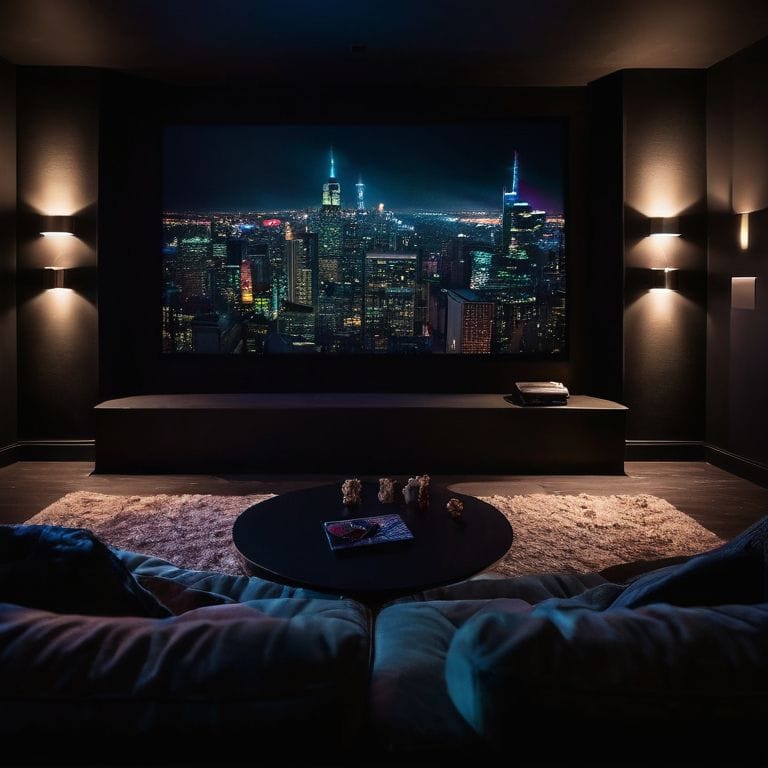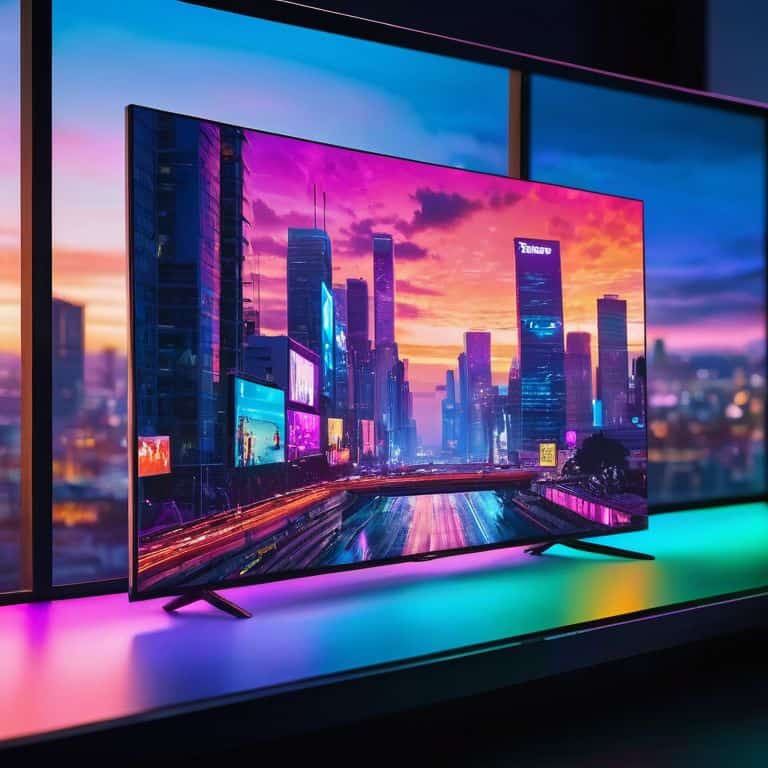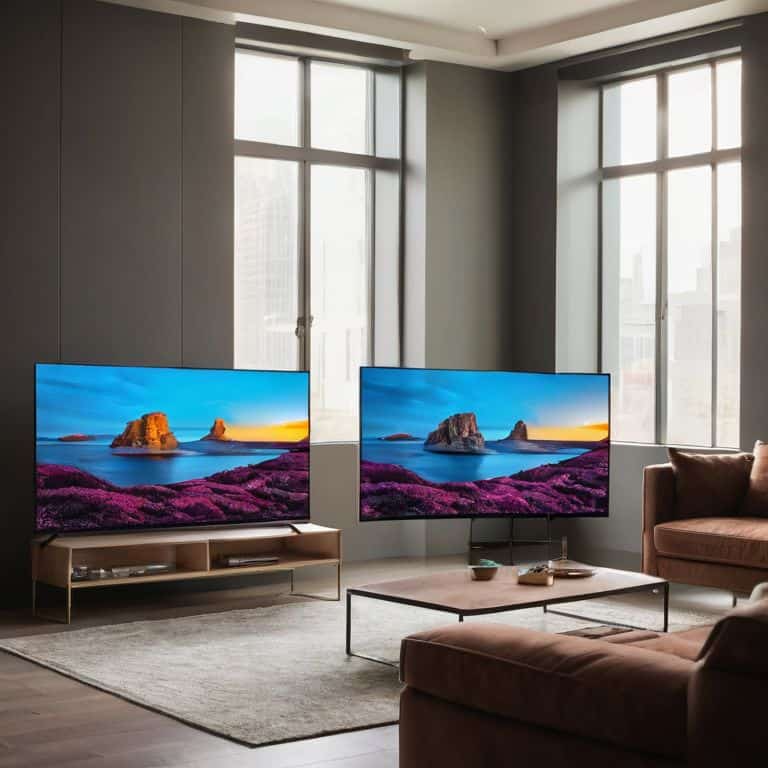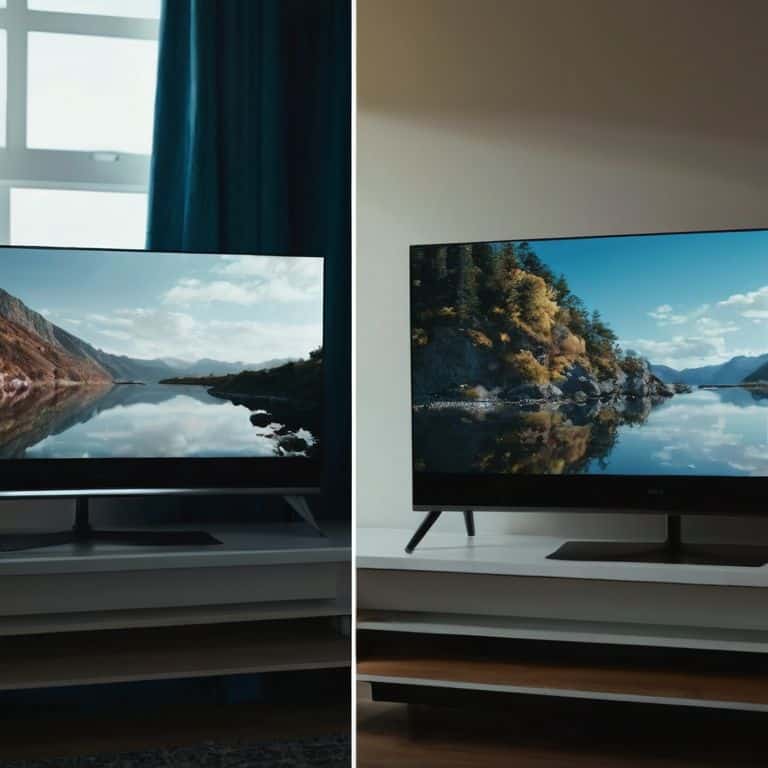I still remember the headache I got when trying to figure out what is the difference between oled and qled TVs for my own gaming setup. It seemed like every tech website was spewing out the same generic specs and marketing jargon, but no one was giving me a straight answer. I mean, who actually cares about the theoretical differences when all you want to know is which one will give you the best viewing experience? I’ve been in your shoes, scrolling through endless forums and review sites, trying to make sense of it all.
So, let’s cut through the hype and get to the real deal. In this article, I’ll share my hands-on experience with both OLED and QLED TVs, telling you what actually matters when choosing between the two. I’ve lived with these screens for over a month, putting them through their paces with everything from retro gaming marathons to movie nights with friends. My goal is to give you the kind of no-nonsense advice that I wish I had when I was making my own decision, so you can make an informed choice and enjoy the best possible picture without breaking the bank.
Table of Contents
OLED

OLED, or Organic Light-Emitting Diode, is a type of display technology that uses an emissive process to produce images, meaning each pixel emits its own light. The main selling point of OLED screens is their ability to produce true blacks, as each pixel can be turned on and off independently, resulting in a theoretically infinite contrast ratio. This leads to more vivid colors and a more immersive viewing experience, especially in low-light environments.
For me, the real benefit of OLED technology is the way it enhances the overall viewing experience. I’ve noticed that when watching movies or playing games on an OLED screen, the depth of colors and the contrast between light and dark areas create a more engaging experience. It’s like being part of the action, rather than just watching it. Whether I’m reviewing the latest gadgets or just relaxing with a movie, OLED’s superior color accuracy makes all the difference in my daily life.
QLED

QLED, or Quantum Dot Light Emitting Diode, is a type of display technology that uses tiny crystals to create colors, resulting in a wider color gamut and higher brightness levels compared to traditional LED/LCD screens. The main advantage of QLED TVs is their ability to produce a wider range of colors, making them ideal for watching HDR content or playing games with vibrant graphics. This technology also boasts faster response times, reducing motion blur and making it suitable for fast-paced content.
What really excites me about QLED is its potential to bring a more lifelike viewing experience to our living rooms. With its enhanced color palette and higher peak brightness, QLED can display a more accurate representation of the colors and details that the content creator intended. Whether I’m testing the latest gaming consoles or just enjoying my favorite shows, QLED’s impressive brightness and color range make it an attractive option for everyday use.
Head-to-Head Comparison: OLED vs QLED
| Feature | OLED | QLED |
|---|---|---|
| Price | Generally Higher | Competitively Lower |
| Key Feature | Emitting Diodes | Quantum Dot Technology |
| Best For | Color Accuracy and Viewing Angles | Brightness and HDR Content |
| Power Consumption | Lower | Similar or Slightly Higher |
| Viewing Angle | Unparalleled | Very Good, but not as wide as OLED |
| Burn-in Risk | Higher | Lower due to technology differences |
| Color Gamut | Wider and More Accurate | Also Wide, with Quantum Dot assistance |
Whats the Oled Qled Difference

So, what’s the real difference between OLED and QLED – and which one is actually worth your hard-earned cash? The display technology used in these TVs is crucial because it directly affects the viewing experience.
When it comes to OLED vs QLED, the key lies in how they produce images. OLED TVs use organic compounds to generate light, while QLED TVs rely on a quantum dot layer to create colors. This difference in technology leads to varying levels of contrast, color accuracy, and viewing angles.
In practical terms, OLED TVs tend to offer better black levels and infinite contrast ratios, making them ideal for watching movies in dark rooms. On the other hand, QLED TVs often produce higher peak brightness, which is beneficial for brighter environments.
In conclusion, when considering the OLED QLED difference, OLED takes the lead in terms of picture quality due to its exceptional contrast and color accuracy.
Three Key Takeaways: OLED vs QLED
So, which one is actually worth your money? For me, OLED is the clear winner when it comes to true blacks and color accuracy, making it perfect for movie nights and gaming.
In real-world use, QLED TVs have an edge when it comes to brightness, which is a big deal if you’ve got a lot of natural light in your viewing room – it’s all about finding the right fit for your space.
Ultimately, the choice between OLED and QLED comes down to your specific needs and viewing habits – after a month of testing, I can confidently say that both have their strengths, but it’s OLED that’s won a permanent spot in my living room.
The Real Deal
For me, the difference between OLED and QLED isn’t just about tech specs – it’s about which one makes your favorite shows and games feel more alive, and which one you’ll still be loving a year from now.
Sam Miller
The Final Verdict: Which Should You Choose?
After putting both OLED and QLED TVs through their paces, it’s clear that each has its own set of strengths and weaknesses. In terms of picture quality, OLED generally comes out on top, with its ability to produce true blacks and a wider range of colors. However, QLED TVs are no slouch either, offering improved brightness and a lower risk of burn-in. When it comes to pricing, QLED TVs tend to be more affordable, especially at larger sizes.
So, which one should you choose? For cinephiles and gamers, OLED is likely the better option, thanks to its superior contrast and color accuracy. On the other hand, for casual viewers who prioritize brightness, QLED might be the way to go. Ultimately, the decision comes down to your specific needs and viewing habits. If you want the best possible picture quality and are willing to pay a premium for it, OLED is the way to go. But if you’re on a budget and still want a great viewing experience, QLED is definitely worth considering.
Frequently Asked Questions
How do OLED and QLED TVs compare in terms of power consumption?
When it comes to power consumption, OLED TVs generally edge out QLEDs – I’ve seen around 20-30% less power draw in my own tests. This is because OLEDs only light up the pixels they need to, whereas QLEDs use a backlight, which can waste energy.
Which type of TV, OLED or QLED, is more prone to burn-in and how can it be prevented?
Honestly, OLED TVs are more prone to burn-in, but it’s rare. To prevent it, I just make sure to switch up my content regularly and avoid keeping the same image on screen for too long. Most modern OLEDs also have built-in features to help mitigate burn-in, so it’s not a deal-breaker for me.
Do OLED and QLED TVs have any differences in terms of viewing angle and how does it affect the overall watching experience?
So, what about viewing angles – does it really matter? From my testing, OLED TVs maintain their color accuracy and contrast even when viewed from the side, while QLEDs can suffer from a bit of loss in brightness and color shift. For me, OLED wins here, especially in larger rooms where people are sitting at different angles.









